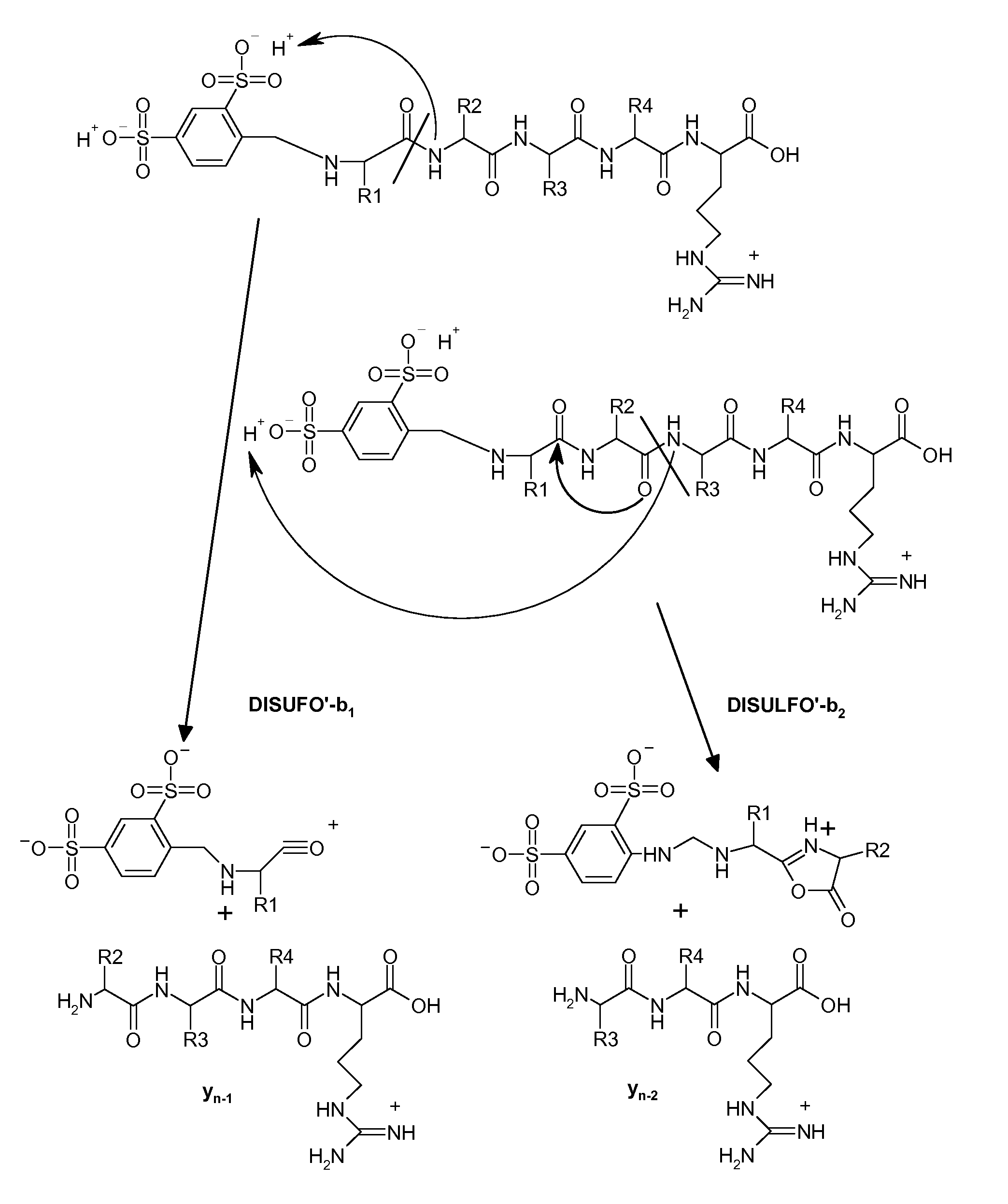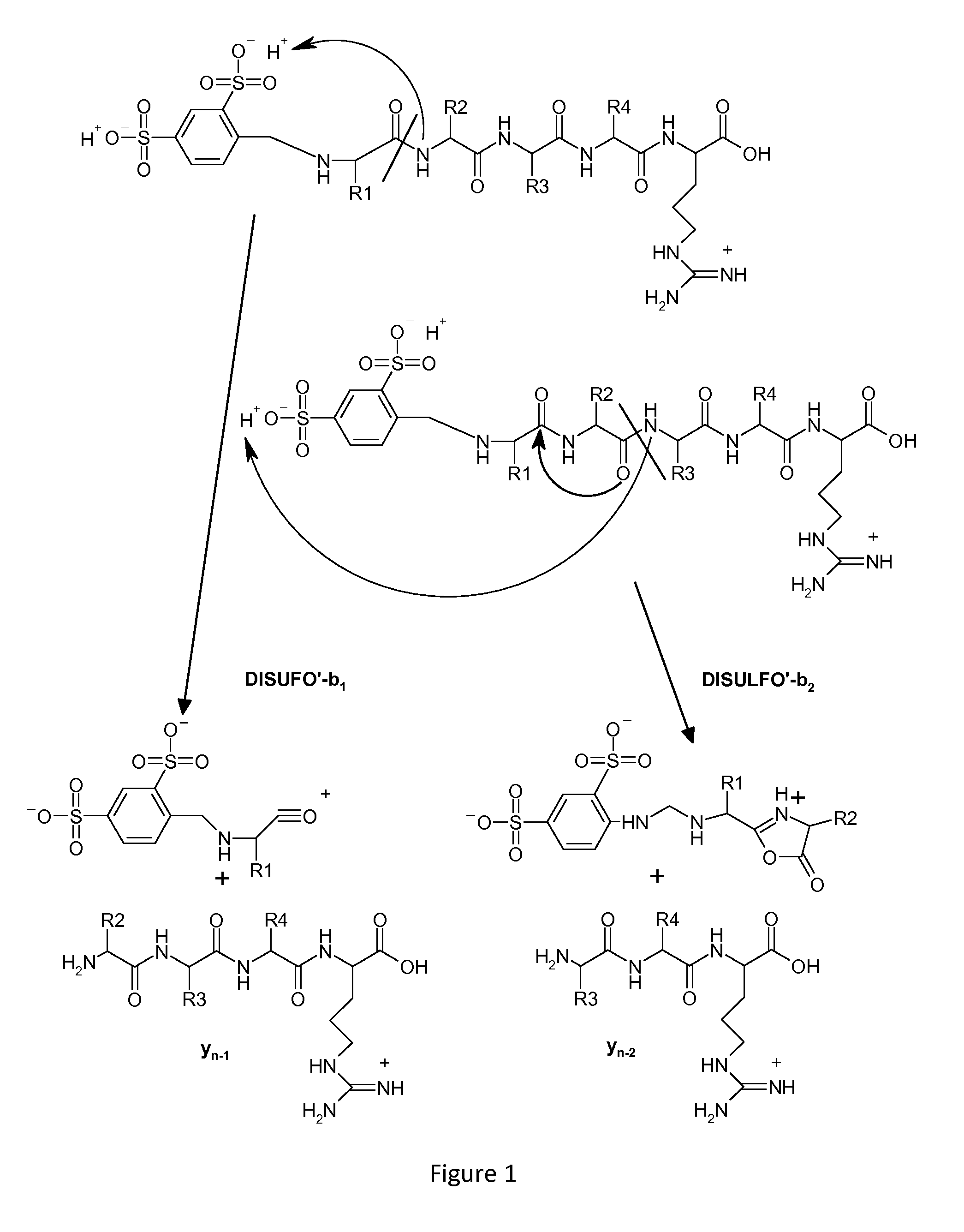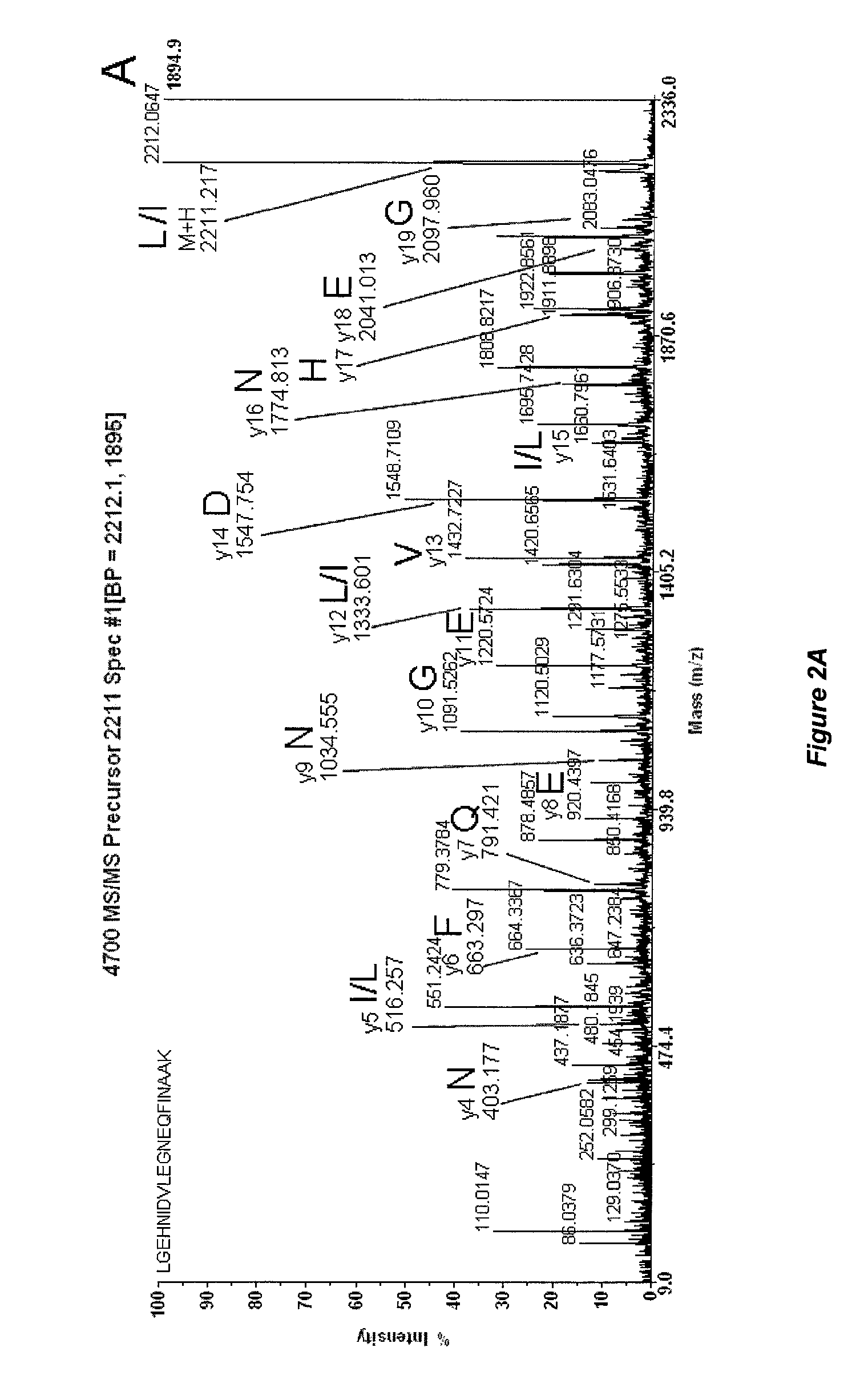Mass spectrometry-based protein identification method with selective N-terminus derivatization
a mass spectrometry and protein identification technology, applied in the field of amino acid sequence detection and identification methods, proteins and peptides, can solve the problem that none of the currently known derivatization methods enabled the acquisition of ms/ms spectrum of negative ions
- Summary
- Abstract
- Description
- Claims
- Application Information
AI Technical Summary
Benefits of technology
Problems solved by technology
Method used
Image
Examples
example 1
Use of 4-formylbenzene-1,3-disulfonic acid as a derivatization compound
[0033]In this example the method of peptide derivatization of the subject invention by chemical reaction in two stages was used: first stage includes condensation of aldehyde and primary amine with production of Schiff base, and the second stage includes reduction of imines of Schiff base into amines. The reagents used included: 4-formylbenzene-1,3-disulfonic acid of company Sigma Aldrich (St. Louis, Mo., USA), NaBH3CN4 (Merck, Darmstadt, Germany), and peptides obtained by trypsin autolysis (Merck, Darmstadt, Germany), CHCA matrix (α-cyano-4-hydroxycinnamic acid, Sigma Aldrich, St. Louis, Wis., USA).
[0034]Table 1 presents known trypsin peptides and their ions detected by mass spectrometry, which are produced during trypsin autolysis prior to derivatization by 4-formylbenzene-1,3-disulfonic acid.
[0035]
TABLE 1Peptides produced by trypsin autolysis withtheoretical calculation of masses of cor-responding ions.FRAGMEN...
PUM
| Property | Measurement | Unit |
|---|---|---|
| pKa | aaaaa | aaaaa |
| mass | aaaaa | aaaaa |
| pH | aaaaa | aaaaa |
Abstract
Description
Claims
Application Information
 Login to View More
Login to View More - R&D
- Intellectual Property
- Life Sciences
- Materials
- Tech Scout
- Unparalleled Data Quality
- Higher Quality Content
- 60% Fewer Hallucinations
Browse by: Latest US Patents, China's latest patents, Technical Efficacy Thesaurus, Application Domain, Technology Topic, Popular Technical Reports.
© 2025 PatSnap. All rights reserved.Legal|Privacy policy|Modern Slavery Act Transparency Statement|Sitemap|About US| Contact US: help@patsnap.com



